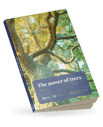Maintaining ecological balance and biodiversity depends on protecting wildlife. Implementing successful wildlife protection policies is essential to ensuring the survival of animals and sustaining healthy ecosystems. In this article, we will explain the most effective methods for preserving and protecting wildlife.
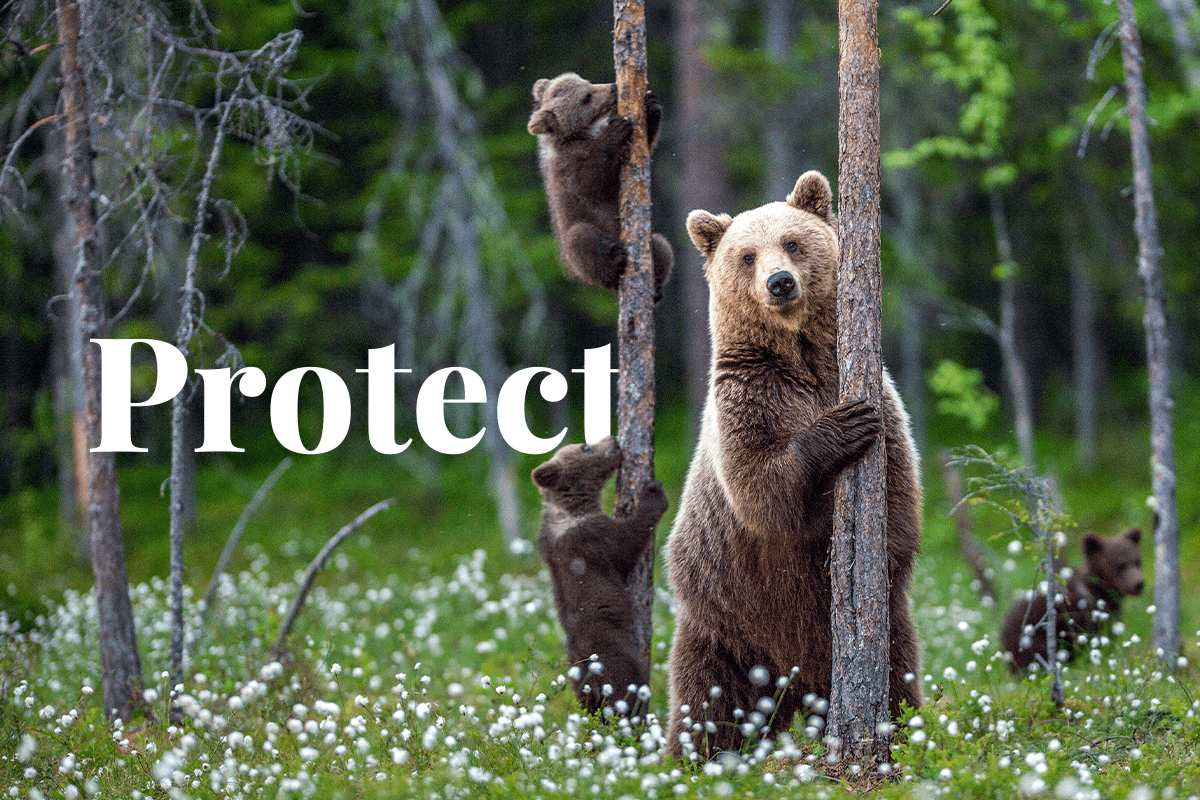 Bear and bear cubs in their natural habitat. Summer forest on the bog.
Bear and bear cubs in their natural habitat. Summer forest on the bog.
1. Habitat conservation
Conserving natural habitats, such as wetlands or woods, entails protecting land from development and other human activities that can disturb the ecology. Reforestation or wetland restoration initiatives are examples of ways to repair degraded habitats. It is also a proactive approach to species protection.
Read more: Why should endangered species be protected?
Nature-based projects such as those of DGB Group help restore nature at scale by creating habitats and revitalising biodiversity through reforestation, afforestation, and community-based agroforestry. For instance, our Bulindi Chimpanzee Habitat Restoration Project aims to rapidly restore the declining chimpanzee habitat of over 300 chimpanzees in Bulindi, Uganda, through active afforestation and community involvement. By investing in our projects, you not only help to create and preserve vital habitats but also take responsibility for your environmental impact by offsetting your carbon footprint with our verified carbon credits.
Preserve habitats and start measuring your environmental impact
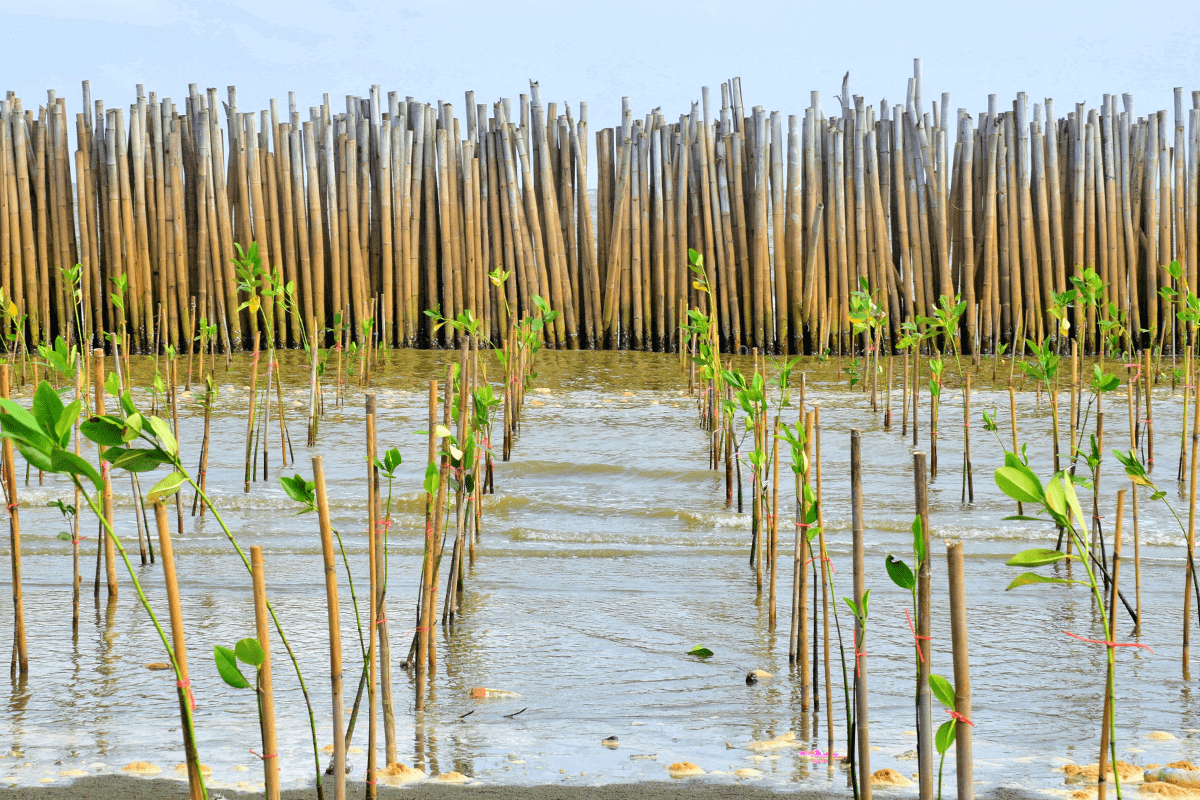 Mangrove forest restoration planting field in Thailand, South East Asia.
Mangrove forest restoration planting field in Thailand, South East Asia.
2. Sustainable land-use practices
Encouraging sustainable land-use practices can protect wildlife by reducing habitat loss and fragmentation. This can include promoting sustainable agriculture, reducing the use of pesticides and other harmful chemicals, and using eco-friendly technologies in forestry and other industries.
Sustainable land-use practices also involve reducing the impact of human activities on wildlife populations. This can include measures such as reducing pollution, minimising disturbance, and avoiding activities that disrupt natural ecosystems. By minimising our impact on the environment, we can help to reduce stress on wildlife populations and ensure their long-term survival.
Join DGB in protecting nature
3. Research and monitoring
Monitoring the status and trends of wildlife populations is essential for effective conservation management. Research can identify opportunities for conservation and inform policy and management decisions. This can include monitoring changes in habitat quality, population size, and other key indicators of wildlife health and survival.
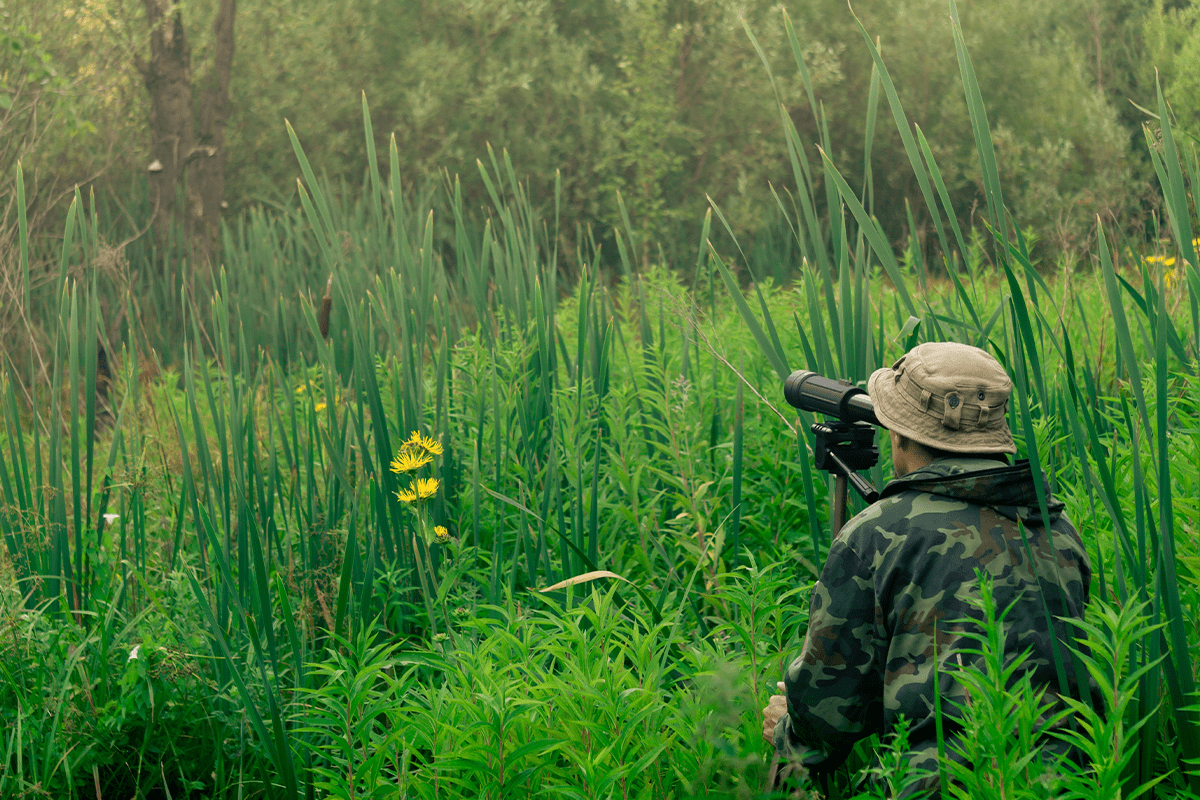 Birdwatcher making field observations and research.
Birdwatcher making field observations and research.
4. Public education and awareness
Educating the public about the importance of wildlife conservation is crucial in creating a culture of responsible and sustainable behaviour. This can be done through outreach programmes, school programmes, and public awareness campaigns that raise awareness about the impacts of human activity on wildlife.
Read more: Ugly species need biodiversity protection too
Public education and awareness can promote a deeper appreciation of nature and wildlife. By learning about different species and their unique characteristics, people can develop a greater understanding and appreciation for the natural world. This can foster a sense of responsibility and stewardship, encouraging individuals to take action to protect wildlife and their habitats.
5. Creating wildlife areas
Creating wildlife areas is an excellent approach to helping local wildlife populations and providing much-needed habitat. By investing in nature-based projects or converting your property into a wildlife-friendly habitat, you provide a safe refuge for birds, butterflies, bees, and other species while also promoting biodiversity.
Wildlife areas provide animals with a place to graze and relax. You can provide food and shelter for many wildlife species by growing a selection of native plants and shrubs. Flowers that attract butterflies and bees, trees that provide nesting sites for birds, and shrubs that provide cover for tiny mammals and reptiles are examples of this. You can also invest in DGB's nature-based projects that plant millions of trees and make a positive environmental impact on a large scale.
Invest in our nature-based projects and make a positive impact
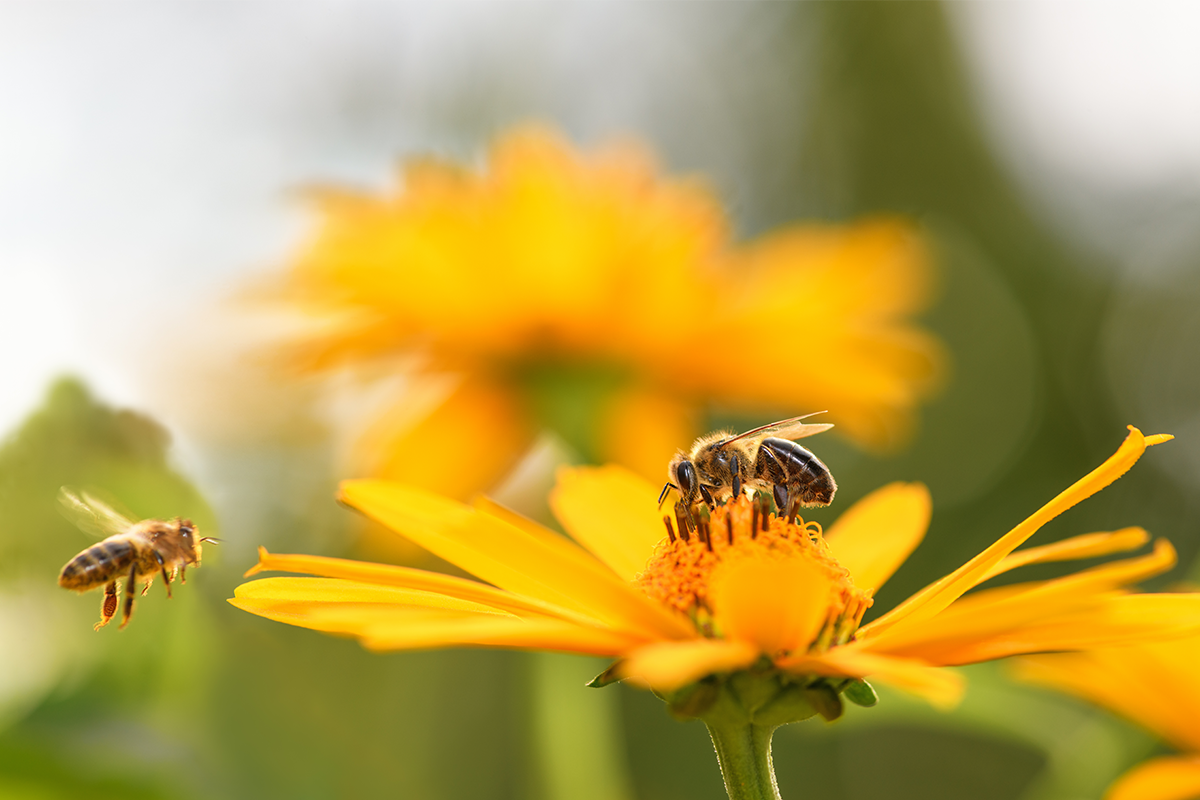 Bees collecting pollen in the meadow.
Bees collecting pollen in the meadow.
6. Recycling
Recycling reduces the demand for new products, protects the lives of animals, and contributes to carbon offsetting by lowering waste sent to landfills and incinerators, both large sources of carbon emissions. Recycling helps reduce an organisation's overall carbon footprint by diverting waste from these facilities. Using recycled materials also reduces the pressure on the habitats and preserves them for wildlife.
7. Plant trees
A fantastic method to protect the natural habitats of nearby animals is to plant trees in your garden or on any other potential land via tree-planting programmes. This helps provide the habitats and resources needed for wildlife to prosper. Trees are sources of food, shelter, and breeding grounds for many animal species. Trees also provide resting places, nesting sites, and animal hunting locations. Planting trees can also help to offset the carbon emissions of human activities. DGB's nature-based projects plant millions of trees, helping to restore nature at scale and provide vital habitats for species. Our selection of indigenous tree species not only sequesters large amounts of carbon but also restores ecosystems and supports local communities.
Support nature and plant trees with DGB
You can also support wildlife protection by reducing your environmental impact and calculating and offseting your carbon footprint. By offsetting your carbon footprint with our verified carbon credits, you support our nature restoration and tree-panting projects.
Measure your environmental impact
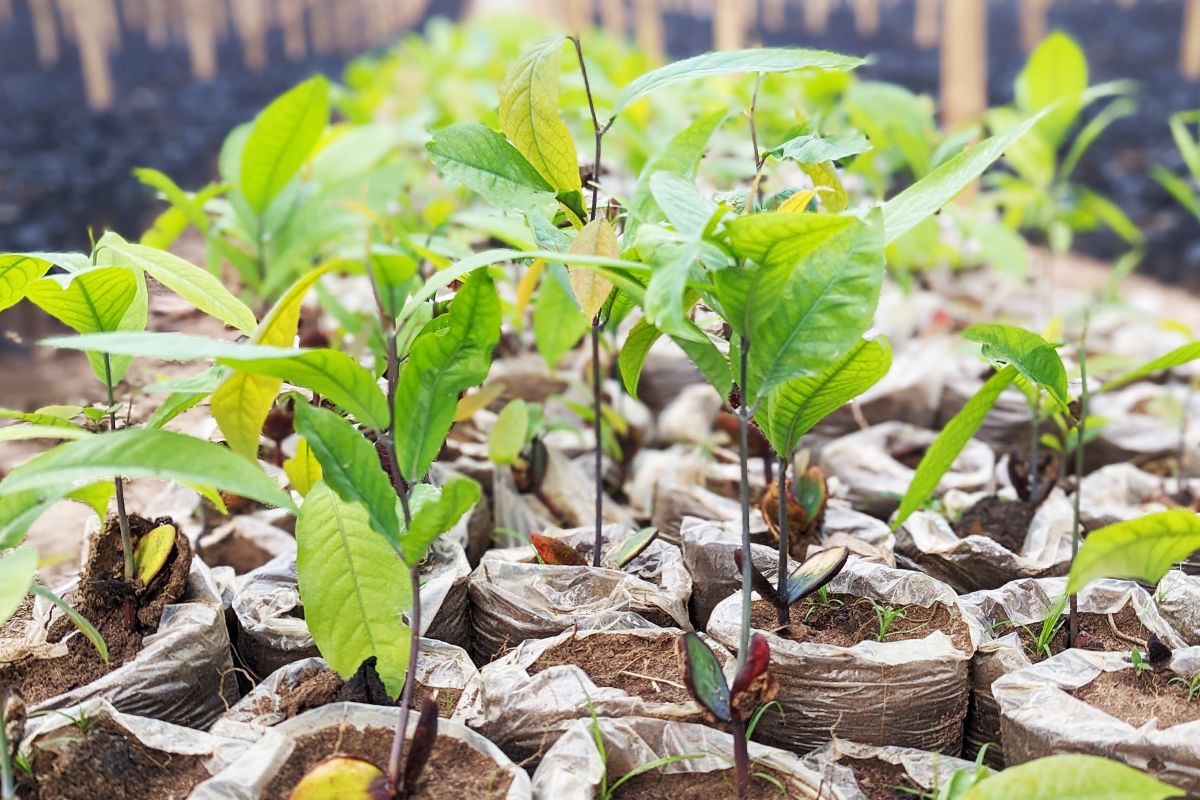 Sawa Afforestation Project, DGB.
Sawa Afforestation Project, DGB.
The importance of protecting wildlife
There are many ways you can protect wildlife. Sustainable land use practices, public education and awareness, tree planting, recycling, wildlife habitat creation, and investing in nature-based projects are all examples of techniques for protecting the natural environment.
Also, wildlife resource conservation carries profound implications for our planet and future generations. The consequences of wildlife resource conservation extend beyond biodiversity preservation. Conserving wildlife resources helps maintain the overall health and resilience of ecosystems, preventing habitat destruction, curbing pollution, and combatting the illegal wildlife trade. Such efforts mitigate the loss of valuable species and their habitats, safeguarding the intricate interdependencies of nature. Moreover, wildlife resource conservation promotes the sustainable use of natural resources, supporting the livelihoods of local communities and fostering environmental stewardship. By valuing and protecting wildlife resources, we contribute to a healthier planet, enhanced ecological sustainability, and harmonious coexistence between humans and nature.
Read more: Reforestation: 10 amazing benefits of planting trees
DGB supports biodiversity and protects wildlife by planting millions of trees and making a positive impact on the environment and local communities. Our goal is to improve the state of global forests and the habitats they provide by implementing high-quality nature-based solutions. Our mission is to protect wildlife, and planting trees is one of the most effective ways to protect them.






